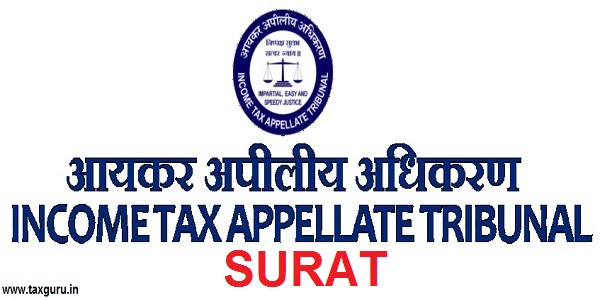CA Dinesh Darak
Introduction
The recent global financial crises, intense regulatory requirements, extensive competitive pressures, voluminous data, have created a challenging environment for financial institutions to operate, make effective decisions, manage risk, thereby affecting financial reporting and regulatory compliance.
Many financial institutions lack consolidated view of risks across the organization because of lack of integration between risk and finance information. With their weakness in risk management laid bare by the economic crises, they are being forced to improve on risk governance processes and increase the collaboration between risk and finance information.
Many financial institutions are remodeling their business processes in order to get better information for effective decision-making, risk management, financial reporting and regulatory compliance in such a challenging environment. Today probing regulatory environment demands various type of specific information about the business promptly and failure to meet these demands promptly and effectively can only make supervisors more inquisitive and heighten the possibility of intervention and regulatory/reputational penalties.
Considering this, business needs to be run in a different way. Effective decision making demands faster, more frequent and more consistent information about a financial institution’s risk exposures, the capital needed to support them and the resulting impact on its present and future profitability. It also requires the ability to generate risk-adjusted performance measures (e.g. return on risk-adjusted capital) at a granular level, be this by customer, country, asset or sector.
The problem is that the current systems, processes and data within many banks struggle to provide this joined-up view. The result is increased opportunity costs (both through the impact of missed business openings and higher funding and capital costs). Many banks also face rising operational costs and change budgets by continuing to implement workaround fixes that fail to resolve the root problems.
In this regard, one of the crucial steps is to improve on how finance function understands and use risk considerations and information.
Focus areas of integration
Integration of risk and finance function must be at enterprise level and to make a robust integration, financial institutions must focus on following areas
- Data Management
- Data Quality
- Critical measuring
- Governance
- Application architecture
- Management information and dashboards
1. Data Management
This is the basic requirement for integration of risk and finance function. An organization must create a common data repository and maintain it with qualitative and comprehensive data on regular basis. Such repository must
- Store risk aggregation and finance accumulation
- Addresses needs of all risk types such as credit, market, liquidity and operational risk
- Serves the requirement of finance including financial and management accounting
- Cater to regulatory reporting requirements
- Supports risk versus return current and predictive measures
- Get data in real time
- Source data from the source of capture rather than multiple hand warehouse
- Use common business driven taxonomies
2. Data Quality
Data quality is just not necessary for having correct reported figures, but also a requirement of regulators. Generally, data quality problem includes
- Missing and incorrect data,
- Data that is untrustworthy because it has not been regularly maintained or does not have appropriate overrides,
- Lack of data context,
- No identified owner for the data,
- Lack of traceability; e.g., the source, data chain and modifications of the data are not clear.
Maintenance of data quality is an area of continues challenge and following three key criteria must be used to determine data quality
3. Critical Measuring
Critical analysis of risk versus return and calculation of forward looking measures will help eliminate reactive behavior in management and provide a significant competitive advantage.
Analytics-driven processes are the main point of differentiation among financial institutions. Analytics have been used to slice and dice historical data to analyse past. The use of real-time data can support front office traders to help them accurately predict key end-of-day regulatory charges, counterparty and product mix optimization, thereby, risk officers can proactively monitor existing exposures versus return and regulatory charges.
Financial institutions can take these analytical techniques one stage further at pre-deal stage using real-time data. Front office traders will be able to accurately predict regulatory charges, risk and return on given counterparty and product mixes to ensure the optimal combination has been chosen. Furthermore, financial institutions can avoid trades that potentially exhibit wrong way risk or have known data issues. Models must be developed using real-time data and an infrastructure that supports use in a front office, pre-deal predictive capacity.
Today’s financial services landscape is a dynamic, fast moving industry where small
market data changes and downgrades can have a larger impact on the value and return of a portfolio. Reactive, end-of-day approaches to monitoring such events are often inadequate to capture major negative impacting events. The ability to monitor and even predict such events as they occur and take immediate action is undoubtedly a key advantage.
4. Governance
Regulators have required that financial institutions improve the governance of their risk and finance functions. Internally, financial institutions need to increase the credibility of programmes with a buy-in from management and a top-down governance approach. A steering committee must exist that has board representation and ensures governance around the following key areas.
Alignment
Change programmes must be initiated to align risk and finance functions. Data, processes, policy and technology within each function should be reviewed so that
all performance measures are assessed subject to the risk of a security or investment.
Management Decision Making Processes
All decisions regarding return or performance must be made with respect to the risk taken. Governance must ensure the risk, return and indeed capital charge consequences are inherent in every decision making process.
Data and Data Quality
The data used within the risk-finance function must be part of overall data quality and governance program. The data must be of quality, traceable, timely and its context understood.
5. Management reporting and Dashboards
One of the most important activities is reporting and analysing the results of performance and return based upon the associated risks and feeding those results into management decision-making processes. Management information and dashboard layers must have analytic capabilities and allow performance and return based upon:
- Various risk types; and
- Results by product lines and geographical regions.
IT involvement
The global trend towards alignment of risk management, finance, and operational performance is uncovering both vulnerabilities and opportunities in the way financial institutions do business, and creating opportunities for technology vendors to expand their offerings and achieve long-term growth.
Financial institutions in the midst of developing strategy for linking finance and risk management should take three key steps to effectively build, deploy and manage the infrastructure and processes:
- Reduce reliance on historical indicators
- Integrate and standardize information systems
- Embed risk and financial management information throughout the enterprise
Commitment to the integration of finance and risk requires a robust technology platform and tools to support its maintenance and management.
An integrated IT platform is vital to support risk and finance integration. The IT platform must seamlessly integrate:
- Data that supports all risk types, scenarios, aggregation, financial and management accounting. The data must be the same data used by other risk and finance processes so no reconciliation issues occur;
- Data quality metrics and traceability; and
- Management information and dashboards
Tools must exist to allow efficient input and timely calculation of results. Similarly, workflow to manage scenario review and force results to relevant stakeholders must exist.
IT Vendors should identify practices which are critical to the design, building, deployment and management of technology solutions to support integrated finance and risk management, including standardizing on a single data model and a cohesive approach to creating business rules for generating warehousing, transforming, analyzing and reporting data.
The high-level benefits of deploying such technology solutions include reducing costs associated with technology investment and maintenance of data through automation, improving services through better connectivity and shorter implementation cycles, and enhanced control and data quality.
Key benefits of integration of risk and finance information
- Improved access to better quality information for decision-making, risk/capital management, financial reporting and regulatory compliance.
- Transparency leading to greater understanding of performance, risk and capital at business-unit, product and portfolio levels.
- Risk-based pricing – a sound and advantageous approach in today’s world of scarce capital, lower-risk appetite and reduced leverage.
- Cost-saving synergies for regulatory reporting, management reporting and capital allocation, through integration of similar processes and functions (e.g. data, assumption setting, modeling, reconciliation).
- Better quality decisions that reflect real, risk-adjusted returns and are informed by sound understanding of true profitability, taking into account returns and risk.
Conclusion
An efficient control and consolidated view of risk demands greater alignment between risk, finance and IT. In reality, a new and significantly improved degree of alignment is a prerequisite for successful outcomes. It must be in place before starting any technical integration program, or the consolidation of risk data, systems and controls.
(The author is working as a functional consultant in Banking and Financial services with Tata Consultancy Services Ltd and can be reached at his email id dinesh.darakca@gmail.com or mobile number +919930204031.)























Hi dinesh a very good article on this subject which is the need of the hour in the current uncertain economic and regulatory enivronment…
An insightfull article..
This might bring a new revolution in IT sector. Thanks Dinesh for sharing information on Risk and Finance Integration. Keep posting.
worth reading…thanks dinesh for so important update.
Good Article. Very interesting read!!